Ein kurzer Blick auf das von a16z geleitete soziale Protokoll Towns. Ist das dezentralisierte soziale Networking zurück?
Originalautor: TechFlow
Recently, the founder of a16z funded AI Bot with $50,000, and the subsequent creation of the popular Goat token by this Bot became a hot topic.
But don鈥檛 forget that a16z鈥檚 original intention was not to invest in Meme. The projects invested by this top VC are mostly successful in various fields.
Yesterday, the decentralized social protocol Towns, in which a16z once led an investment of 25 million US dollars, was officially launched. However, due to the overly hot Meme super cycle, serious projects were ignored due to the limited attention.
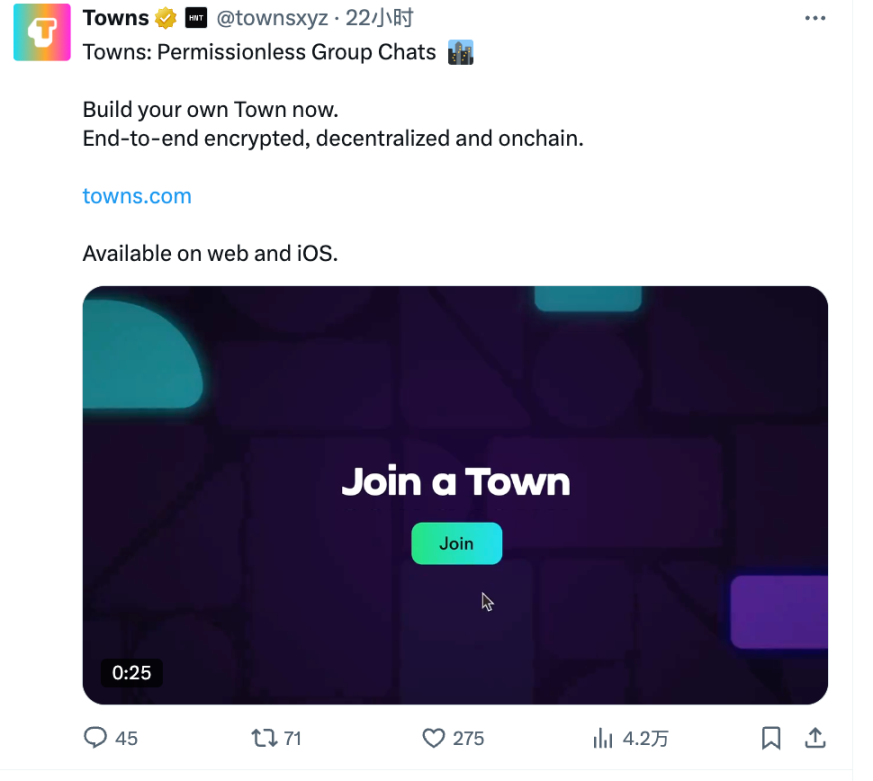
With the attitude of better to be wrong about 10,000 things than to ignore one, new crypto products always need to be researched before they are launched. What if there are opportunities when no one is interested?
We quickly registered and tried out this product that looks more like the decentralized Discord. With the founder of Telegram being arrested, FriendTech being abandoned, and Farcaster being lukewarm, is decentralized social networking coming back this time?
Functional experience: more like a decentralized Discord
First of all, don鈥檛 get me wrong, a16z leading the $25 million investment was not announced recently.
In February 2023, Towns raised $25.5 million in a Series A round led by Andreessen Horowitz (a16z), with participation from Benchmark and Framework Ventures.
After nearly two years of development and polishing, the Towns product was officially launched recently.
In the crypto world where new things come out every day, the pace of creating an application product in two years is relatively slow; but moving forward step by step and launching it online after it is finished gives people the feeling that they may be making a serious product.
So, what exactly are the product functions of this Towns?
1. Login: No encrypted wallet login option, blockchain logic is encapsulated

Currently, Towns provides a web version and an IOS application. After visiting https://www.towns.com/ and entering the login option, you can see that there is no design for logging in using any wallet, but it directly provides mainstream methods such as third-party account login and mobile phone login.
After registering and entering the personal details page, you will find that the system has automatically linked and created a built-in wallet. It is likely that the MPC wallet design without a private key is also adopted. The users blockchain logic is encapsulated at login, which is also a common processing method used by most consumer-grade encryption products.
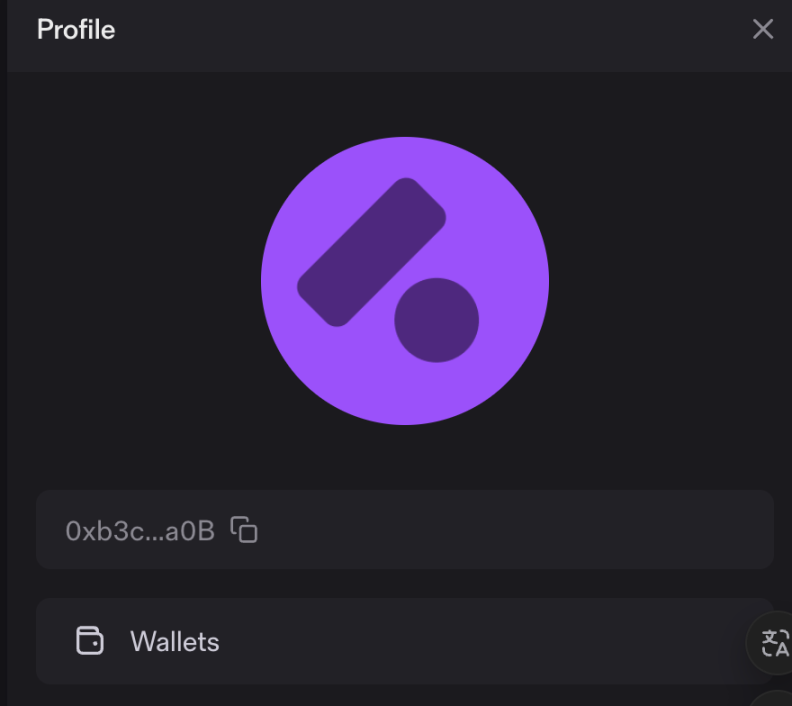
2. Create a group: Similar to Discord, but with a commercial space for paid membership
After registering an account, Towns provides two options – join a group or create a group yourself.
In fact, the logic of this group is basically similar to Discord. Different people find different interest groups based on their interests, and then start different types of topics and functional divisions in the groups.
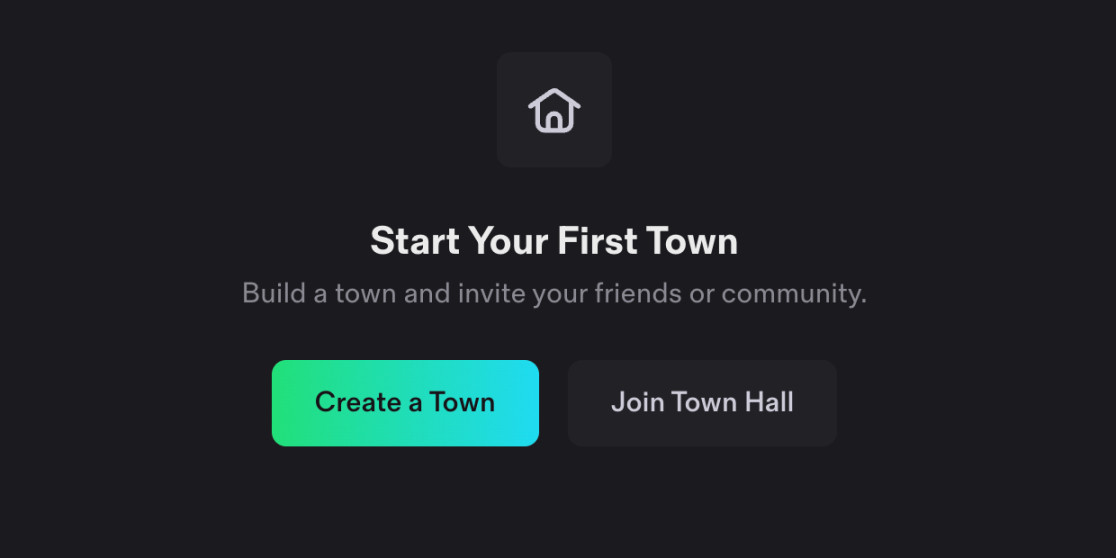
When creating a group, Towns uses on-chain economics and token/NFT permission control to provide built-in membership payment and commercialization functions.
As shown in the figure below, you can customize the first 100 people to join the group for free; those who join later can choose to join the group at the same price, or they can choose to follow the model of cheaper first and more expensive later to create FOMO emotions.
At the same time, since it is a completely end-to-end decentralized application, the creation of groups and the joining of members are all on-chain behaviors, and gas fees will be charged accordingly. Group creators can have the option of prepaying gas to advance gas for joining members; of course, you can also get this money back from their membership fees.
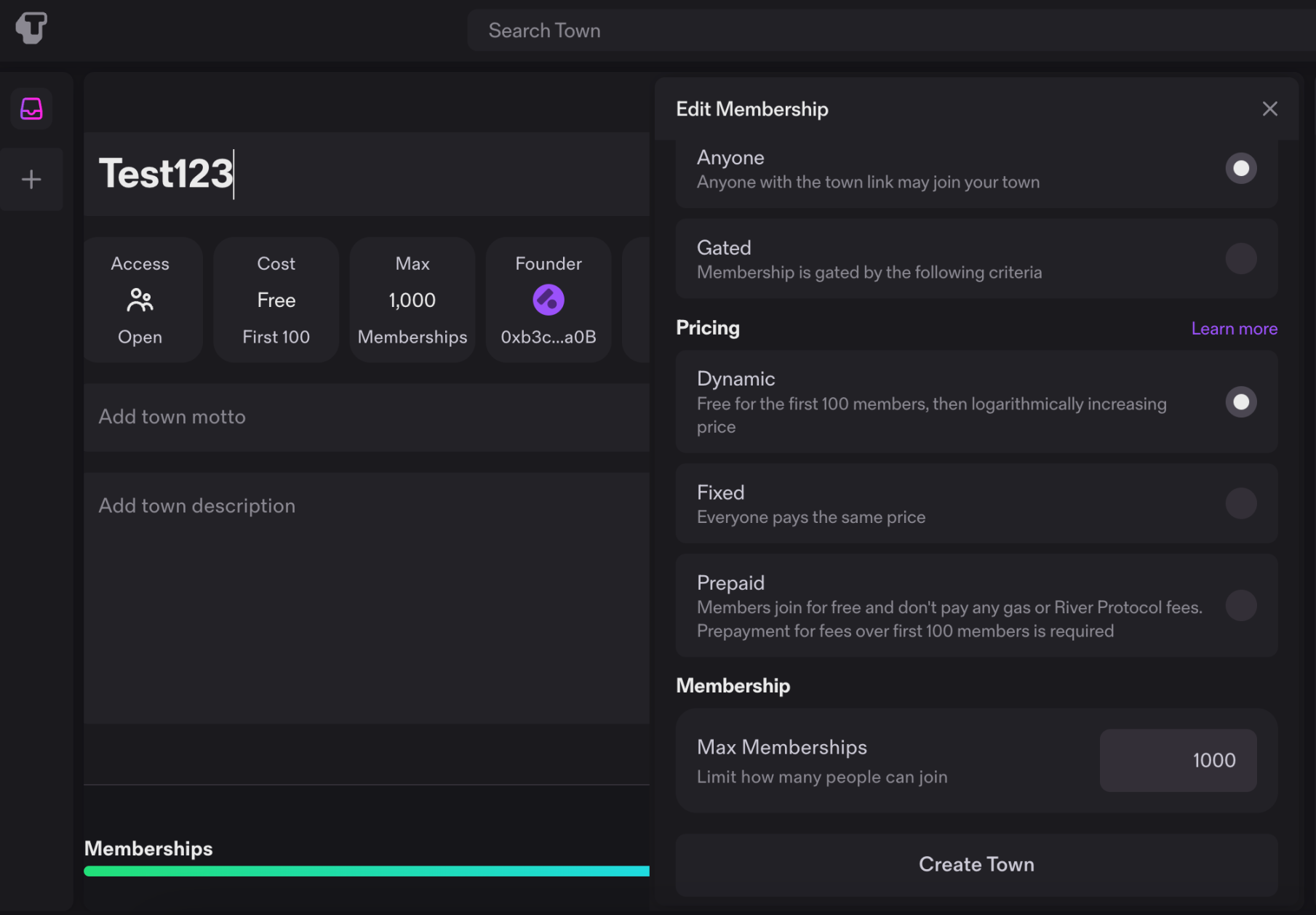
In addition, you can also specify conditions, such as holding certain tokens or certain NFTs to join the group.
3. Join the group: Join Mint and gain control over your information
If you want to join a group, after clicking the button, you will find that the system will automatically help you mint the NFT of the group identity to confirm that first, it is indeed your own operation, and second, you have indeed joined the group.
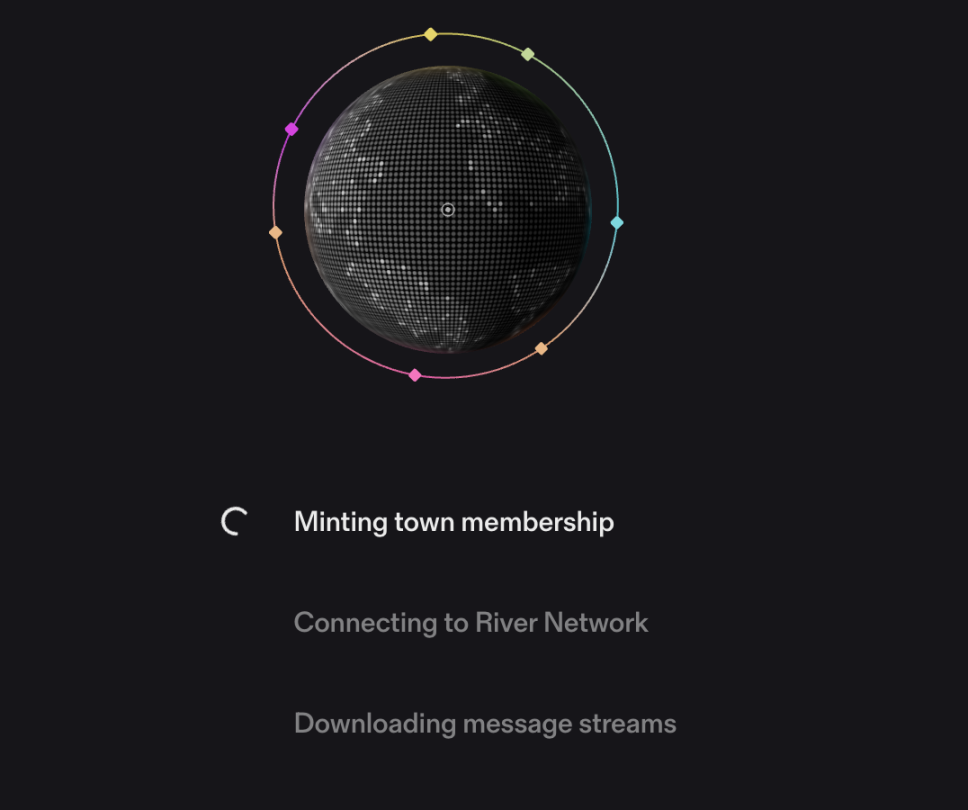
This action is then confirmed on the chain, and then all the information flows in the group are synchronized. At the same time, due to the decentralized design of the chain, your message flow and information are not actually controlled by a single centralized entity; but the front-end experience is a normal Discord.
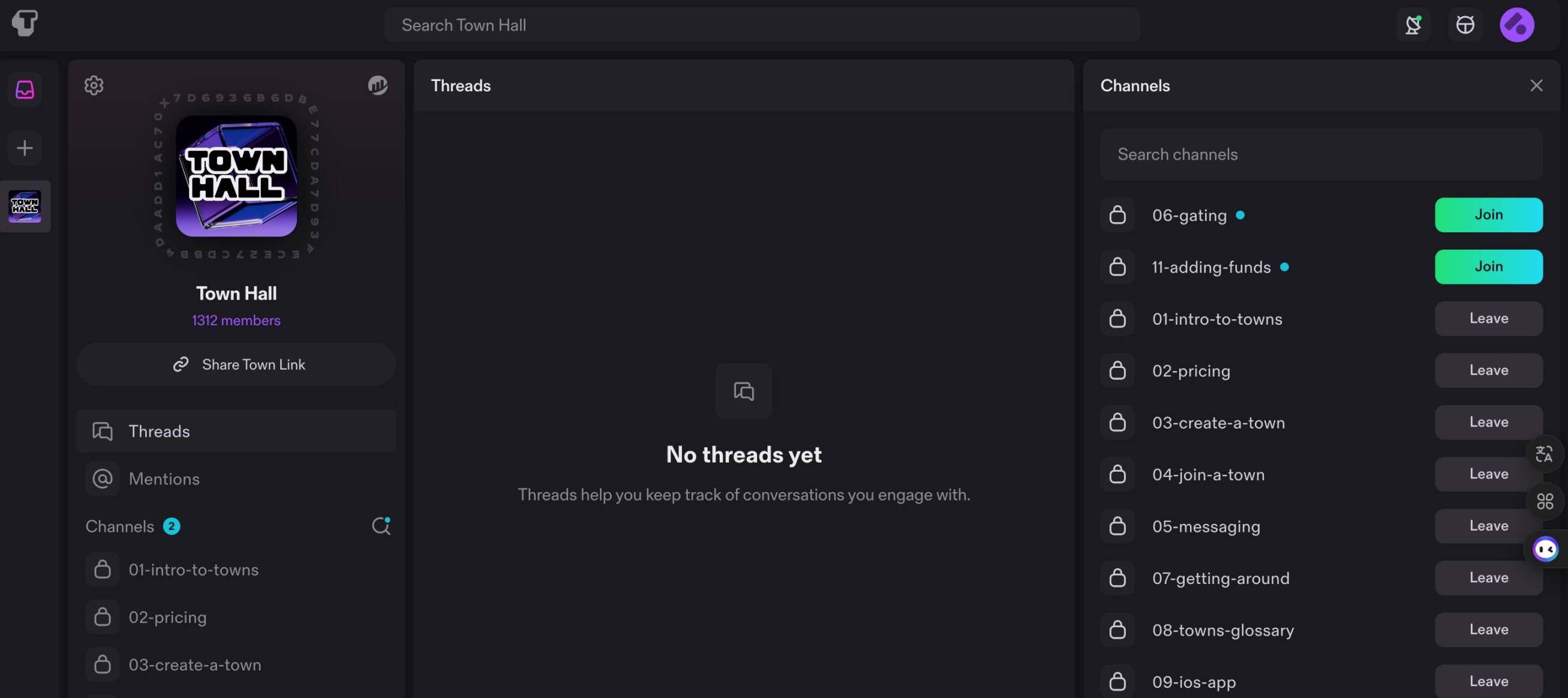
Behind the scenes: River-supported application chain
So, how did Towns become a completely on-chain social protocol? The answer lies in River, a Layer 2 scaling solution designed specifically for decentralized social applications.

The River Protocol provides Towns with a three-layer technical framework that enables high-performance, decentralized social functions.
1. EVM-compatible L2 chain
Towns runs on River鈥檚 Layer 2 (L2) chain.
In the application scenario of Towns, this means that users social interactions (such as posting, commenting, liking, etc.) can be completed quickly and cheaply on the chain without being affected by the congestion of the Ethereum mainnet.
2. Decentralized off-chain flow nodes
To handle real-time communication needs, Towns leverages Rivers decentralized off-chain node network. Working through an efficient peer-to-peer communication protocol, it is able to provide messaging performance close to that of a centralized system while maintaining decentralized features.
This enables Towns to support real-time chat and notification features similar to traditional social platforms.
3. Smart contracts deployed on Base
The core business logic of Towns is controlled by smart contracts deployed on Base. These smart contracts define the basic rules of the Towns social protocol, including user identity management, community creation, permission control, etc.
Based on these three components, each community group in Towns is actually an independent, programmable on-chain asset, which is called Space. Each Space is a unique NFT that represents the ownership and management rights of the community.
More importantly, in order to protect user privacy, Towns implements end-to-end encryption. This means that all communications between users are encrypted, and only the two communicating parties can decrypt the content. This function is directly integrated into the Towns protocol layer, ensuring that privacy protection does not rely on any centralized server.
Towns VS Warpcast
Both are projects invested by a16z. What are the similarities and differences between Towns and its predecessor Warpcast?
We made a table to help you quickly understand:
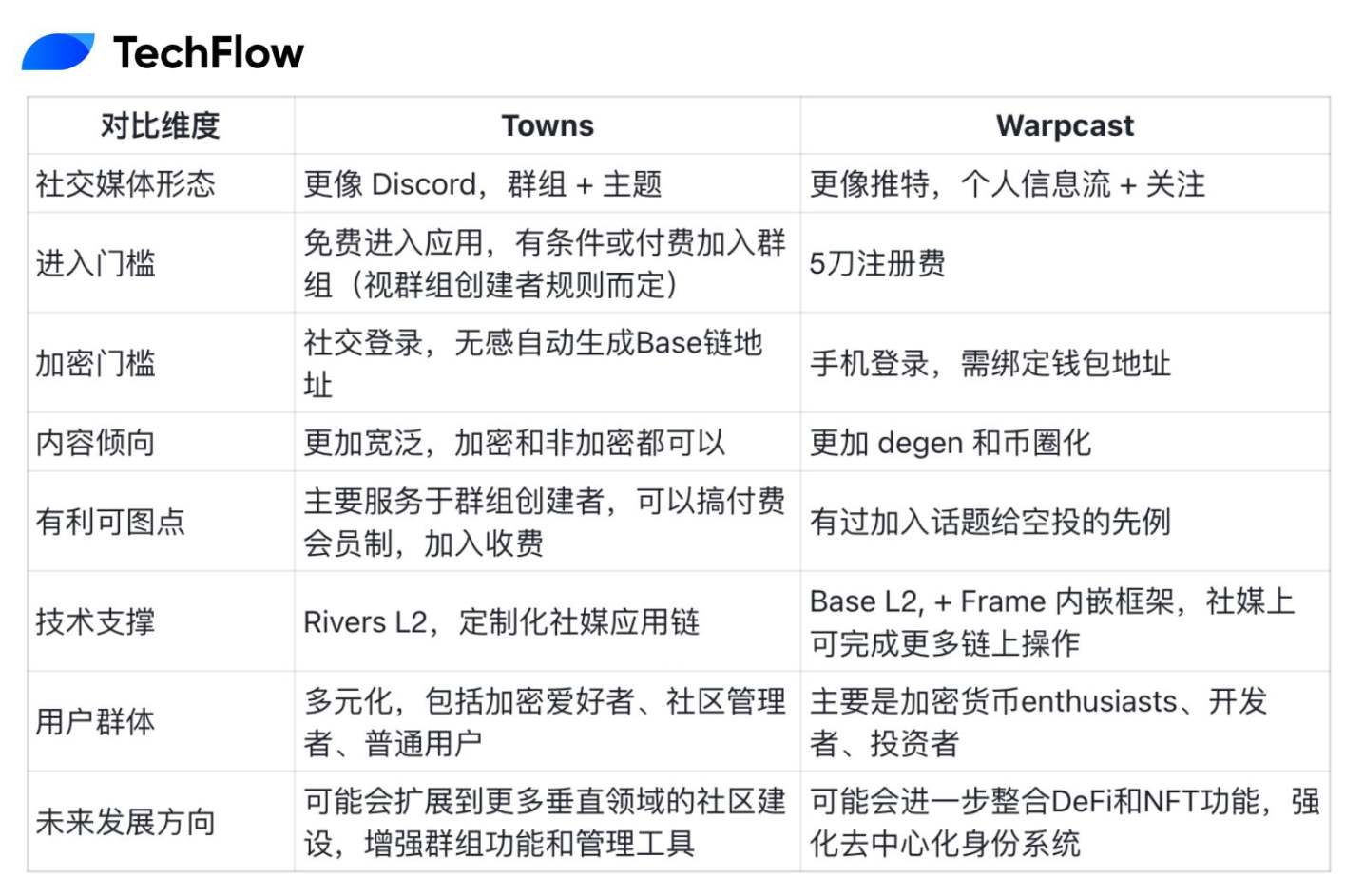
Finally, in the crypto world where the attention economy is king, Towns must answer a key question if it wants to develop:
For the so-called complete decentralization, do users really have the motivation to abandon Telegram, Discord or even Farcaster?
User habits cannot be changed in one day. Sometimes, getting used to an app is more convincing than switching to another app out of fear that the sky will fall.
The resistance of Towns obviously comes from the above existing applications, so the Go To Markt strategy is even more important. For example, Towns is also actively getting close to popular crypto communities and NFT holders, actively creating a community for them to attract them to join, such as Azuki, Doodles and Penguin in the figure below.
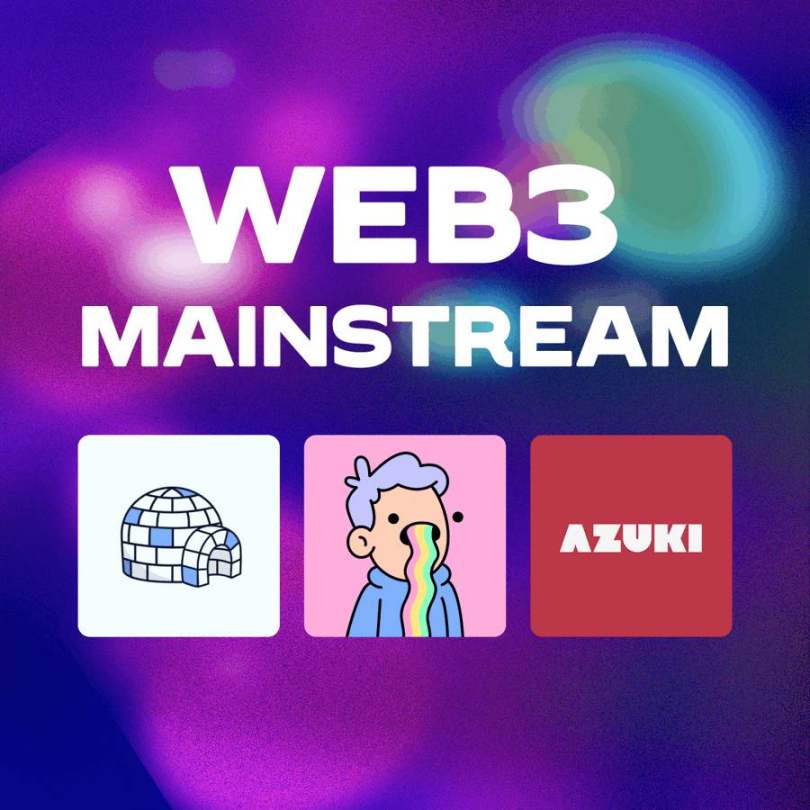
The premise for these to work is that it is profitable. Only when it is profitable will people who create groups be willing to create groups (such as sharing Alpha), and people who join groups are willing to pay the entry fee.
In addition, the crypto market is also a point that cannot be ignored.
After all, who would be willing to join a group chat after losing all their money? Crypto social applications still have a long way to go.
This article is sourced from the internet: A quick look at the social protocol Towns led by a16z. Is decentralized social networking back?
Related: Rune is back, here is a list of the most popular rune projects (with selection strategies)
Original | Odaily Planet Daily ( @OdailyChina ) Author: Golem ( @web3_golem ) The current total market value of Rune has rebounded to US$1.3 billion. According to CoinGecko data, DOG鈥O鈥O鈥HE鈥OON has risen 29% in 7 days, and its market value has exceeded US$500 million; PUPS鈥ORLD鈥EACE has risen 165.6% in 7 days, and its market value has exceeded US$190 million; BILLION鈥OLLAR鈥AT has risen 92.7% in 7 days, and its market value has exceeded US$83 million. Changes in the total market value of Rune in the past three months (in US dollars), from GenniData , October 12, 17:20 The leading rune also boosted the popularity of the primary market. Due to the enthusiasm of the market for new listings, the transaction fee of the Bitcoin network also rose to more than 20…







